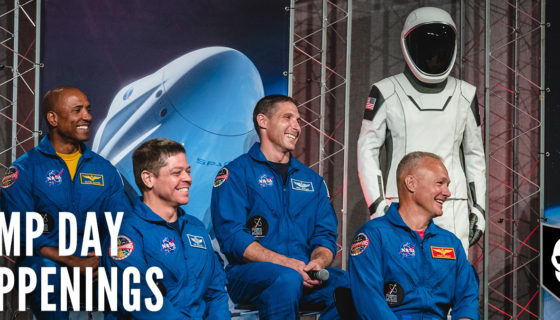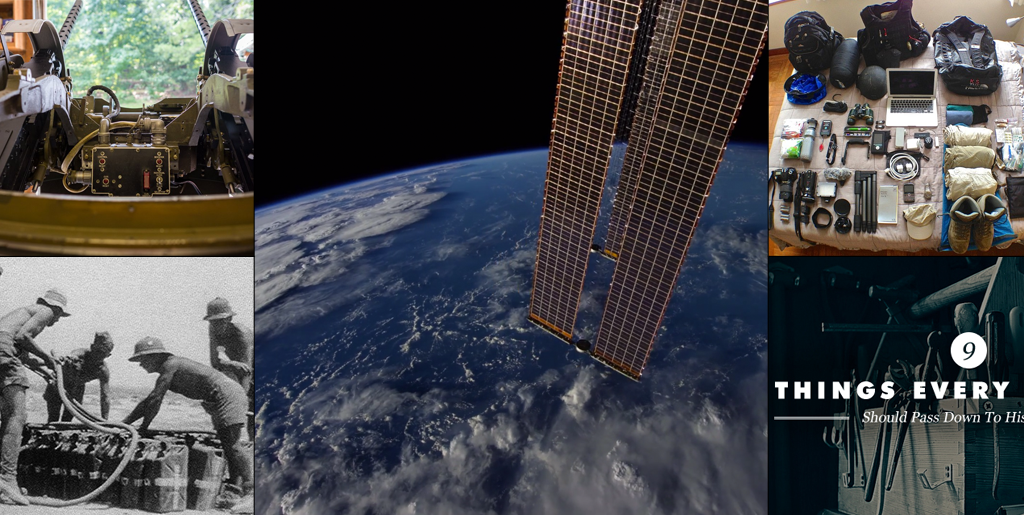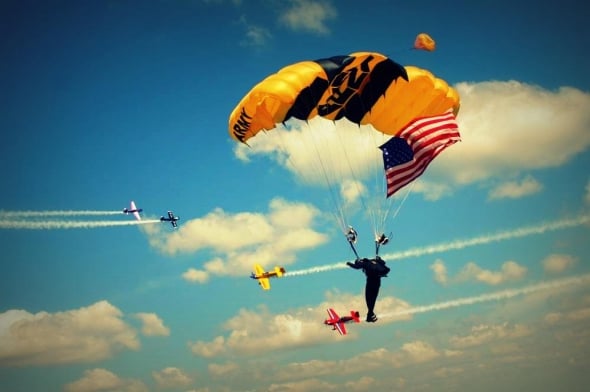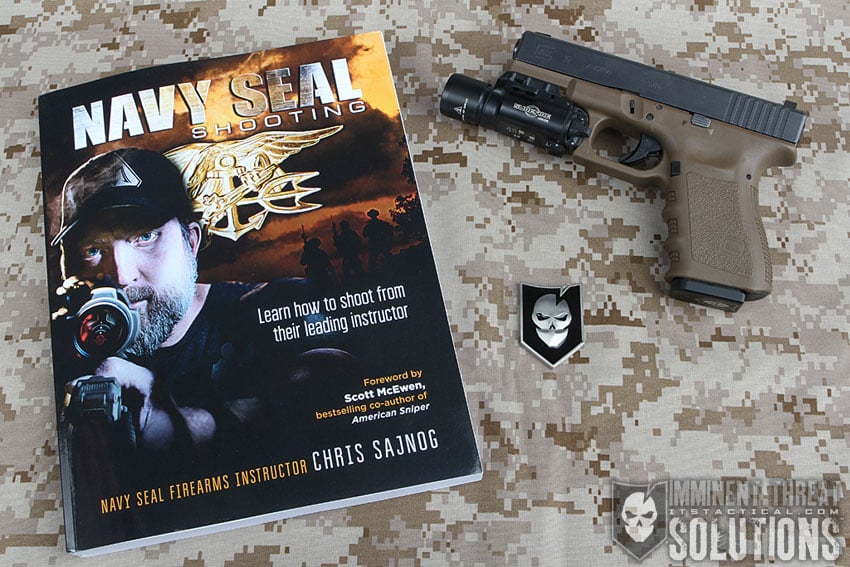Expanding the Envelope: Lessons Learned from Red Bull Stratos
Expanding the Envelope: Lessons Learned from Red Bull Stratos

© balazsgardi.com/Red Bull Content Pool
Editor-in-Chief’s note: This post was written by former Air Force Pararescue Jumper Nathanael Morrison of Morrison Industries.
14 October 2012 will be a day that lives inside me for the rest of my life. I have been a skydiver for 18 years. I have been a military parachutist for the same 18 years. I am a military freefall instructor and I have taught nearly every type of jumping the military does. I stopped counting my jumps at 5,000 and that was 6 years ago. I worked in the research, design, test and evaluation field off and on for many years and today I am an RDT&E consultant. I have also been an enlisted aircrew member for my entire military career. It has been my job to know human flight, high altitude parachuting, aerospace rescue and anything connected to it. On 14 Oct 2012 my world was blown sky high!
It was on that day that 43-year-old former Austrian Paratrooper and aerial daredevil Felix Baumgartner set multiple world records previously held only by the US government set decades ago. He did it with the help of the Red Bull Stratos team, the David Clark Company and the United States Air Force.
In 2005 Felix Baumgartner and Red Bull began to lay the groundwork for the project. They wanted the mission to “expand the boundaries of human flight.”
In 2007 they began recruiting the team that would execute the Stratos mission. The primary planning phase began and the capsule construction began in Lancaster, CA.
2008 saw Col. Joseph Kittinger join the Stratos team. Col. Kittinger, until a few days ago held the record for the highest freefall jump in history. He jumped from 102,800ft in 1960 wearing protective gear that was so primitive it is hard to understand how he lived through the jump. And in fact he nearly died on that and several other jumps leading up to it due to equipment choices and malfunctions. Perhaps one of the more hard core aspects (as if that’s not hard core enough!) was that his parachute was an old S-18 aircrew egress parachute and not the custom ram air canopy used these days. That means every opening and every landing sucked in a huge way!
It is important to depart hard left for a moment to explain that the reason the USAF was conducting these jumps was to conduct research and development for the USAF and NASA manned space programs. The knowledge gained led to the development of every pressure suit and space suit made between 1961 to present day. In addition, much of the technology we now take for granted was also part of this and similar programs. In those brave days you identified a need, you built something and then you tested it in real life! It was extremely dangerous work.
And speaking of that R&D effort, for the first time in history, in 2008, the David Clark Company signed on and agreed for the first time to make a space suit for a non-government entity: Felix Baumgartner.

© Predrag Vuckovic/Red Bull Content Pool
2009 saw Felix test jumping the new suit. He had to figure out how to fly in it and how to conduct emergency procedures in it. All of this had to be re-written and practiced. His practice jumps went as high as 27,000ft. At the same time, six time Space Shuttle Crewmember and surgeon John Clark signed on as the medical director and set about refining the safety protocols. This was also when the specific design of the parachute and harness began. It had to survive the environment and the fall.
Now that sounds simplistic but it is very dangerous. All containers are not created equally. They are very specific! For example, a Vector harness is terrible for flying in a heads down attitude while the Javelin is excellent. The harness has to maintain integrity in the high-speed environment or it may not open properly and in some cases can kill the jumper in the event of a opening malfunction. The team also purchased the largest high altitude balloons ever made during this year.
In 2010 regulations in the US required Felix to obtain a “gas balloon license” if he was going to be allowed to conduct the experiment. Extensive wind tunnel testing was done to test how every piece of equipment would affect flight and stability at high speed.

© balazsgardi.com/Red Bull Content Pool
2011 saw the USAF involved in testing the suit and capsule for the negative pressure environment of 120,000+ feet. It was here that the suit was certified for the purpose it was built for. Felix spent the year in rigorous physical training, psychological preparation and technical training on the equipment and systems. It is important to note that Felix discovered that he is extremely claustrophobic! It was so bad that he fled Europe to the USA where he sought out the help of sports psychologists and others to overcome his phobia. Some of this was creating an overly elaborate and detailed set of checklists to distract him from the fact that he was locked in a pressure suit in a capsule for many hours.
After intensive training and evaluation, the team then did a complete review of every piece of gear they had built or procured. Was it doing the job? Did they need to improve anything? Did they need to scrap anything. These questions could save lives in the next year.
The secret launch site and facility in Roswell, NM was finally revealed in 2012. It was a very busy 10 months! Unmanned balloon and capsule tests were completed. These were followed by the first operational test of all systems from an altitude of 71,615 feet. This was followed by another test at 97,063 feet where he achieved a speed of 536 MPH.

© Jorg Mitter/Red Bull Content Pool
Then finally, on 14 October 2012, after an aborted launch attempt days earlier, Felix in the Stratos capsule ascended to 128,100ft. The only glitch we know about is a problem with the heater in the visor. Another science note that will be interesting to hear more about was the balloon’s behavior above 115,000 feet. The average ascent rate was approximately 1000 feet per minute. But above 115,000 feet instead of leveling off and stopping, it doubled its ascent speed! There is no telling how high it would have gone if they had not dumped helium from vents to stop the ascent. It may have been due to them jettisoning 60lbs of ballast earlier in the flight in order to punch through the jet stream earlier in the flight. At any rate, the capsule then began to bob and bounce slowly between 127,000 to nearly 129,000 feet but remained in that altitude bracket.
After leveling off (relatively) Felix began the egress checklist. I think his claustrophobia was kicking in because early on he sounded a little shaky when the hatch did not open. Col. Kittinger had to remind him he was still depressurizing. Then as the checklist ticked down it was obvious that Felix was being very, very careful and meticulous. He was concentrating so hard that at times he did not respond to the radio calls and instead just gave a thumbs-up.
The danger was immense. And wrong move could catch something and tear the suit. That would have been a quick and ghastly death. The concerns of this were so great that the “live” feed was actually on a 20 second delay in case tragedy struck. I don’t think I have ever been so desperate to help someone as I was at that moment and I had to constantly remind myself to breath.
Finally, standing on the step outside the capsule, Kittinger told him the guardian angels had him now. Kittinger was the only one allowed to talk to Felix through the entire flight. He trusted the man who had done it before and that bond was unbreakable. It kept Felix calm and focused. If you ask me, Kittinger was the guardian angel that day.

© Red Bull Stratos/Red Bull Content Pool
Felix then said a few words that we could not understand. Then he saluted the planet and said, “I’m going home now.” With that he took one tiny hop off the platform and fell, accelerating to Mach 1.24 34 seconds later. He lost control as he passed through 700 MPH entering a violent spin. But as the air became more dense below he was able to stabilize again and regain level flight. Like the hardcore paratrooper he is, he immediately called into mission control to report the spin and the problems and update everyone on how he was doing. I won’t lie, I shed a tear at that moment.
He was still falling at over 500 MPH and he was reporting data. How do you put words to that? Many of you may not understand the fact that freefall is fun between 2,500-12,500 feet. But above that, things get cold and difficult and that is at 120 MPH. It takes a ton of strength and endurance to maintain proper body position at all. But to then start analyzing information and report it back is amazing! But Felix is also part scientist. He knew that the information was important and he also knew that it is NEVER over until you are on the ground and safe. If observation instruments failed and he burned into the ground and destroyed his personal equipment, he wanted someone to know what happened. That took some guts and a clear head in an extraordinary situation.
Shortly after this he reported that his visor was badly fogged up. This is bad because he was using a wrist-mounted altimeter to determine his altitude. If you can’t see it then you can’t pull at the right altitude and it is poor performance to just let your Emergency Activation Device open the reserve for you. Initially I thought he pulled high but that was not the case. He pulled his parachute at 5,300 feet, just as planned (5000ft). The capsule had drifted a great distance from the base and there was a race for the recovery helicopters time to locate him and give him some guidance on what direction to land in.
As if everything he had done was not enough, he absolutely nailed the landing in a textbook ram air canopy stand up landing into the wind. Once the canopy had collapsed he sank to his knees and raised his arms in victory as the recovery crew gathered around him.

© balazsgardi.com/Red Bull Content Pool
An amazing feat accomplished, three world records shattered and the aerospace world changed forever. But astonishingly, thousands of people looked at this event and chose to hate the people, the event and the company that did it. Irony abounds as these people used the very technology these types of experiments paved the way for, to denounce it as worthless and stupid. If this doesn’t tell us our education system is broken, I don’t know what will. Ignorance it seems knows no bounds.
But there are thousands more that genuinely don’t know and would like to know how this impacts them or the world we live in. And that is both worthy of an answer and a useful line of questioning.
As whole, we discovered many things that I have broken down into Science, Equipment, Capability and Other.
Science
- Why did the balloon not level off but instead accelerate in the final phase? The lab coats will tell us more but Helium has the second most thermal conductive gas in the world so it may be that as the temperatures and solar radiation in the stratosphere increased the gas continued to expand while encountering exponentially less air resistance. That it critical to further high altitude research.
- We can easily achieve Mach 1 without any physiological or anatomical issues. What about Mach 2?
- We now know how to make space and pressure suits that withstand supersonic airspeeds without tearing from our bodies. This is caused when the air pressure exerted on the fabric exceeds the tensile strength of the threat and fabric. This information will be very helpful to the military aviation community.
- We have truckloads of up to date atmospheric data that will help weather and aviation agencies in numerous applications.
- We understand how giant balloons behave. We have never launched a balloon that large before. A lot can go wrong and we learned a lot about how to make new balloons to go even higher.
- I’m not a scientist but I know a number of them and they assure me that the sheer volume of information collected from the capsule and the suit is invaluable.

© Red Bull Stratos/Red Bull Content Pool
Equipment
- Pressure suit. The advancement to the space and flight industries is huge. A suit manufactured for 121K performed perfectly at 128K. We can now make one for 150K or higher. Those suits can be worn by the pilots and crew of the next generation of reconnaissance aircraft.
- Capsule. With the basic design completed and fully tested, larger capsules can be built for a wide variety of purposes. The design features will be used in the next generation of air and spacecraft.
- Balloon. The balloon used is of the standard high altitude balloon design type. It’s just bigger. Now we know how the largest atmospheric balloon in the world behaves. That will help us make bigger ones to go higher, thus increasing our range and capability. There should also be some new research to make a stronger balloon because they are very fragile.
- Cameras. The cameras used were astonishing. We watched this event in HD from the edge of space! Cameras do not perform well in cold or high altitude environments. The ability to build a camera and high data compression broadcast system is amazing. Consider the fact that with NASA we get only a little very low quality footage and rarely live. When these experiments were first done the film was still on… well… film! The cameras on the ground we able to see 130K feet which is remarkable. That seems like a very nice surveillance system to me. A camera that can see 24km? WOW! And I haven’t even mentioned the optical tracking stuff that is years ahead of what the military has. Well, at least that we know about…
- Communications Systems. All we know is that they worked like a charm and took three years to develop. I would love to know more and the implications are obvious. I would love to know if it was a line of sight system of a SATCOM system or something else. I know of some technology that is in production that is just scary, but no word on this new system.
- Commercial tracking systems. The Stratos team used a wide array of compact and micro tracking equipment. They always knew the exact coordinates of Baumgartner and the capsule. They knew the altitude, wind speed, capsule speed, jumper speed, O2 saturation, air density, air pressure and so much more. The Stratos jump was one amazingly precise operation! That sort of micro tracking package can be used in an unlimited variety of applications world wide.
- Parachute. The parachute used was designed for tandem operations. It has a drogue chute, a main canopy and a reserve canopy. However, a normal tandem drogue is set over the main canopy low on the jumper’s back. This one was set over the shoulders. As a parachute instructor I am dying to learn more about this new system! It was built this way to further reduce the possibility of spinning out of control. For those of us in the parachute and aviation world, this is very exciting.
Capabilities
- Transcontinental personnel delivery. Imagine if you will a large capsule with a 4-man SOF team that goes aloft in Germany. At 135K the team exits in wing sleds and crosses the sea to land in Syria. That used to sound crazy to me. Not any more… I am quite sure that with a little work we could drop people from Main and reach Europe with little effort.
- Transcontinental aerial gliders. Building on the previous idea, imagine a large glider with 60+ men hoisted to that altitude for the same mission type. I have this vision of the Aliens movie and again, 2 weeks ago it seemed silly. Not anymore.
- Modern day floating bases. Could you have a floating missile base manned by 4 people at 100K? Seems plausible now… As do a very wide variety of defense and surveillance systems. It’s the same type of deterrent as a submarine to many lesser countries.
- That Star Trek stunt. You just saw the early development of that stunt and capability.
- Higher shuttle bail out altitude. Currently if there is a problem at a given point in flight the astronauts are supposed to chop the engines and glide down to 50,000 feet before attempting a bail out maneuver that has never been adequately tested and is assumed to not work anyway. Now that minimum bailout altitude can be pushed to 130-150K and use a better bail out system. (Yes, I am well aware that the shuttle program has recently been retired)
- Better astronaut/cosmonaut recovery and rescue capability. The current bail out and recovery procedures are a sham. No one expects to live through them. They have never even been realistically tested. This experiment proves that a conventional form of bail out is indeed possible and a reality. Astronauts can go into orbit knowing that at the very least they can cut the engines and get out anywhere below 150K.
- Better pressure suits for high altitude pilots. We are still using the old 1960’s suits. Pilots would love to get into something modern and rated for Mach 1.24!
- Better bail out methods for high altitude pilots. High altitude aircraft like the U2 use capsule ejection systems. Now the technology exists that makes a bail out at 70K an easy reality.
- Better safety for space tourism. It’s real. The technology has been proven. NASA is already contracting them. This will help them design better bail out and recovery procedures.
- A 150-200K jump. The ease with which the Stratos team pulled off 128K leads me to believe that a much higher jump is in the near future. A few equipment tweaks and we’re there!
- Transcontinental high altitude flight. The design of the Stratos capsule will be the number one design reference for the next generation of high altitude aircraft. The dreams of high altitude supersonic commercial flight just got a lot closer to reality.
- Spacecraft design. Commercial companies are subcontracted to build space hardware. As such, new revolutionary spacecraft designs will use the Stratos capsule for reference and inspiration.
- High altitude tourism. Why not? A lot of people would pay for that.
Other
- Extreme Sports. The folks at Red Bull Stratos believe that a new extreme sport is right around the corner. They think 50K skydiving is going to become a reality. And why not. They already have the capability to do it easily. That sort of thing would drive some very extreme innovation.
- The open ended unknown. The original jump was a part of the space program and led to the current space suit designs. That type of research has given us so many things from Velcro to Post-it notes, to tang and thousands more every day items. Who can say how many new everyday items were just created and tested?
There are many things I have unintentionally missed in the list above, but I’m sure you get the idea. This was a very important event for the civilized world, science, aviation and space exploration. The ramifications will be felt for decades. I encourage everyone to keep looking up and pondering the next great adventure. It could be you next time!











Discussion